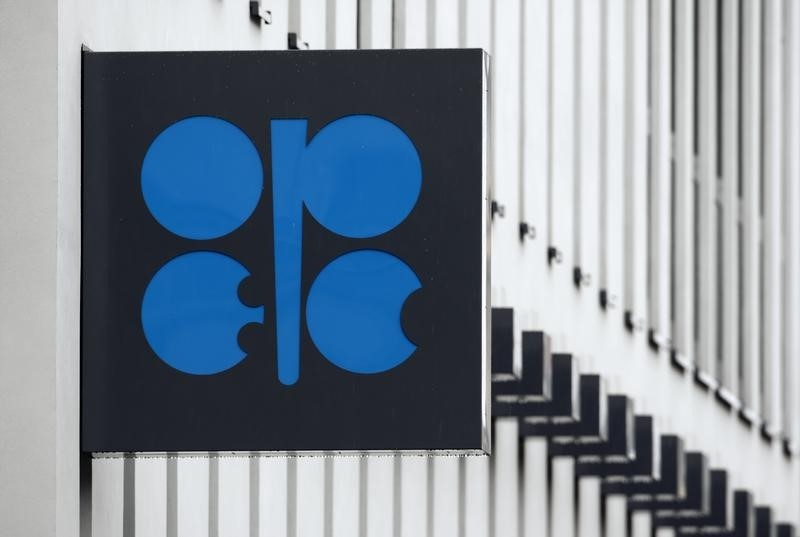(Bloomberg) -- OPEC predicted that global oil markets won’t rebalance until late next year after boosting forecasts for supplies from the U.S. and other rivals.
The Organization of Petroleum Exporting Countries’ monthly report raised its outlook for non-OPEC supply in 2018 by 300,000 a barrels a day, as its projections for American output caught up with those of the U.S. government. As a result, an initiative by OPEC and Russia to clear a global oil glut by cutting output -- previously seen succeeding in the third quarter of 2018 -- will take effect more slowly.
Oil prices climbed to a two-year high above $65 a barrel in London this week, supported by a temporary pipeline halt in the U.K. and the Nov. 30 decision by OPEC and Russia to press on with supply curbs until the end of next year. While Kuwait and the United Arab Emirates said this week the group could consider winding down its efforts in mid-2018 if the market is back in balance, Wednesday’s report suggests they’ll need to persevere for longer.
“Continued efforts by OPEC and non-OPEC to support oil market stability” should “lead to a further reduction in excess global inventories, arriving at a balanced market by late 2018,” OPEC’s Vienna-based research department said in the report.
Blunted Impact
The cartel’s latest figures showed its strategy is paying off, having reduced the oil-inventory surplus in developed nations to about 137 million barrels as of October, compared with about 380 million before the cuts began. OPEC Secretary-General Mohammad Barkindo, speaking to Bloomberg television in Beijing on Wednesday, said stockpiles have since fallen further to about 130 million.
OPEC output fell by 133,500 barrels a day last month to 32.45 million, according to the report. Venezuela’s troubled industry suffered further production losses, the U.A.E. belatedly stepped up efforts to deliver its pledged cutbacks and Saudi Arabia cut deeper than required.
If OPEC were to maintain current output levels to the end of 2018, world inventories would shrink by a further about 274 million barrels, data in the report indicate.
Yet the stronger outlook for supplies elsewhere is blunting the impact of OPEC’s strategy. American shale explorers, who grew more efficient during the industry’s three-year downturn, are locking in future revenues as U.S. prices near $60 a barrel, potentially readying for a new surge in drilling.
OPEC increased estimates of its competitors’ output in 2018 for the first time since the forecast was introduced last summer. It now expects that rival supplies will increase by about 1 million barrels a day, or about 1.7 percent, in 2018. It bolstered forecasts for total U.S. oil production growth next year by 180,000 barrels a day to 1.1 million a day.
“The momentum seen this year is expected to continue in 2018 on the back of increased investment in U.S. tight oil and improved well efficiency,” OPEC said.
